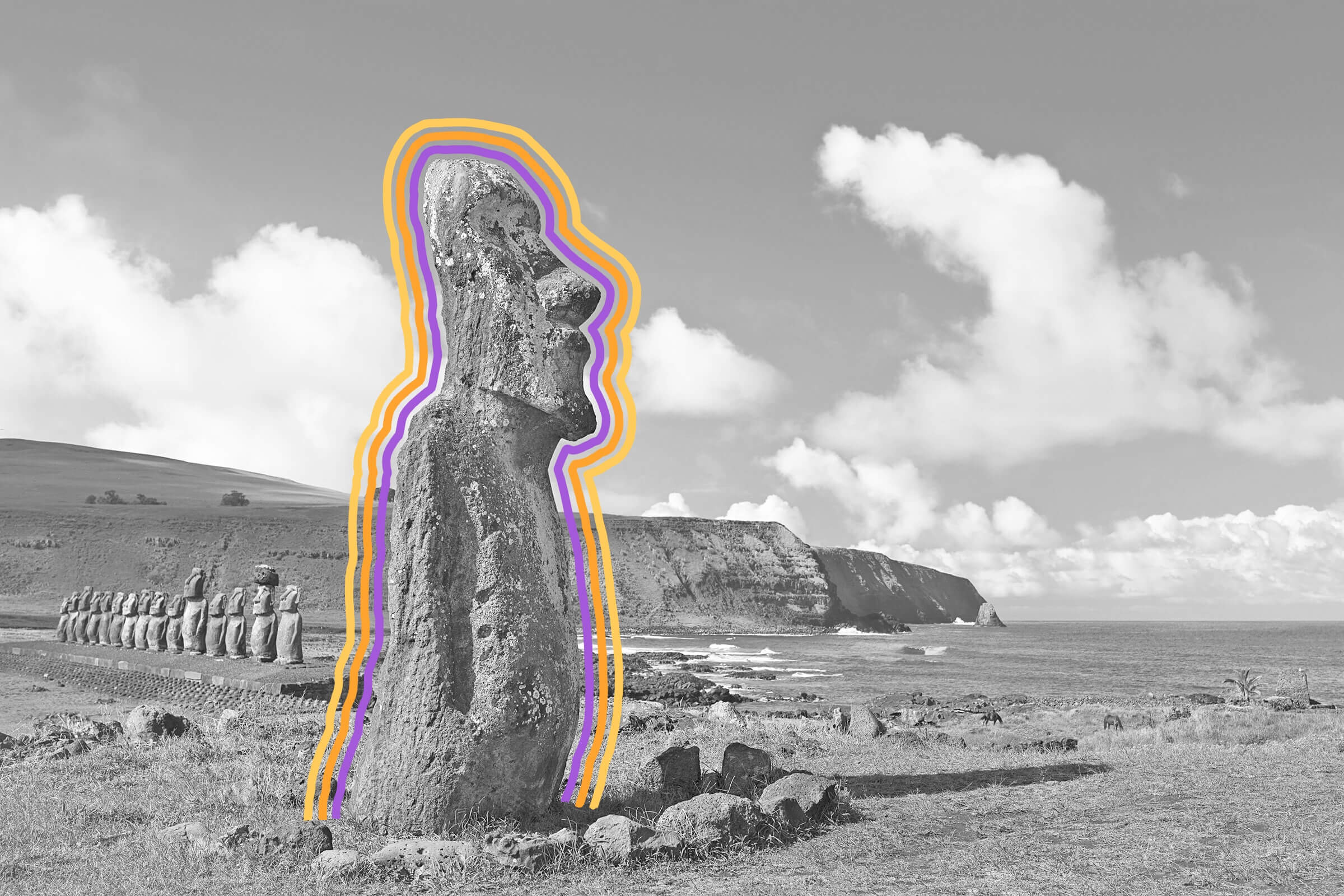

Despite its isolated location in the middle of the Pacific Ocean, the enigmatic Easter Island draws curious travelers from around the globe. Its moai statues fascinate many, yet there’s more to the location than a scattering of stones. Here are seven things you might not know about Easter Island.
A Single Space Makes a Difference

If you’ve ever researched Easter Island, chances are that you’ve probably come across the name Rapa Nui. Although many assume this is the native name for the island, it was only first recorded in 1863. It’s a Polynesian name, which translates to “Big Rapa,” in contrast to French Polynesia, which is similarly called “Rapa.” These days, the islanders are happy to use “Rapa Nui” when talking about their island — rather than Isla de Pascua, the name used by mainland Chileans. But if you see the word “Rapanui” in print (all one word and no space), it refers to the people themselves and not the island.
The Rapa Nui Language Only Has 10 Consonants

The Rapa Nui language has just 10 consonants. (In comparison, the English language has 21.) Spoken by roughly 3,000 people — most of whom reside on the island — Rapa Nui is eastern Polynesian in origin and similar to Maori. However, since Easter Island is a Chilean territory, many people also speak Spanish.
Easter Island Was Once the Site of a U.S. Satellite Tracking Station

From 1966 until 1970, Easter Island was home to a U.S. satellite tracking station. Americans wanted to keep an eye on Russian naval movements during the Cold War, and Easter Island’s remote location was ideal for maintaining secrecy. The U.S. built the first hospital and gave the island its first proper runway, which paved the way for a regular schedule of commercial flights from Chile. Incidentally, the island’s airport is also the most remote on Earth. However in 1970, socialist president Salvador Allende rose to power and expelled U.S. troops from the island.
Most of the Moai Have Their Backs to the Sea

Tour the island and you’ll spot the famous moai — stone figures placed on ceremonial platforms called ahus. At first, they appear to be giant heads, but upon closer inspection you’ll notice that their bodies are sunken into the ground. If you’re observant, you’ll realize that the moai almost always have their backs to the sea. However, if you venture inland to Ahu Akivi, the moai are facing the other direction.
Some say this is because the figures represent the first Polynesians to discover the island, so they were aligned so they face their homeland. However, the statues probably aren’t old enough for this to be true. Others have noted that they line up with certain stars at the time of the spring and autumn equinoxes.
Broken Moai Were Abandoned

The rock found in the Rano Raraku quarry is actually a type of tuff. The stone is made of hardened volcanic ash, but is still much softer than the basalt found across most of the island. Although the rock’s composition made it easy to quarry, it was also very fragile and breakable. A master carver would have overseen the creation of each new moai, a process that could take as long as two years. If a moai accidentally broke, it was left where it fell, since it was believed that the figure’s mana, the spiritual energy that translated to its power, was gone for good.
The Eyes of the Moai Are Significant

The eyes of the moai fit inside carved eye sockets. However, when the moai were hewn from the quarry at Rano Raraku, they had no eye sockets. In fact, sockets were only carved after the moai had been transported to a stone platform known as an ahu where they would be installed. The sockets were angled so that they looked up to the sky. Coral was used to represent the whites of the eyes, while the iris was a piece of obsidian or red scoria. A ceremony was carried out to open the eyes of the moai.
Two Festivals Are Associated With Easter Island

Each February, the Haka Pei competition is staged on Maunga Pu’i hill, and it’s easily the highlight of the Tapati Festival. Two banana tree trunks are fixed together and participants slide to the bottom — reaching speeds of up to 50 miles per hour in the process. Other events staged as part of the festival include sporting events such as canoe and horse races, along with competitions in art, gastronomy, and dance.
Until 1867, the Birdman competition was also staged. The arrival of sooty terns to Easter Island was a signal to rival tribes that they should walk to the village of Orongo. These athletes would rappel down the cliffs to the ocean and swim over a mile out to the rocky outcrop of Motu Nui using a reed surfboard for buoyancy. They would then camp in order to wait for the sooty tern to lay an egg. Whoever made it back to Orongo first with their precious cargo was crowned the winner. The prize was to be that year’s Birdman, the spiritual leader of the island.
